HSJ hosted a roundtable, sponsored by HCL Workforce Solutions, to explore whether the NHS workforce is able to deal with the present and future demands placed upon it. Jennifer Trueland reports
The NHS workforce is often called its greatest asset and is definitely its biggest expense. Yet workforce planning is one of the biggest intangibles facing managers and, indeed, politicians.
Employing the right numbers of the right members of staff and deploying them optimally is already a challenge that will only become more pressing as budgets tighten and demographic and organisational changes hit.
‘Workforce planning is one of the biggest intangibles facing managers and politicians’
An HSJ roundtable, sponsored by HCL Workforce Solutions, explored what could reasonably be done to ameliorate current problems and ensure the NHS has a workforce strategy that is fit for the future.
HSJ editor Alastair McLellan, chairing the event, said workforce planning was a “wicked problem”. It was unlikely that the panellists at the roundtable would solve it, he said, but they could try to come up with some hard, realistic solutions that, if put into practice, could go some way to making a difference.
Roundtable participants
- Sheila Adam chief nurse and director of governance, Homerton University Hospital Foundation Trust
- Claire Billenness, managing director client solutions, HCL Workforce Solutions
- Mark Duman executive chair, Patient Information Forum
- Lance Gardner, chief executive, Care Plus Group
- Andy Haynes executive medical director, Sherwood Forest Hospitals Foundation Trust
- Alastair McLellan editor, HSJ
- Jeremy Over acting workforce director, University College London Hospitals Foundation Trust
- Jon Restell chief executive, Managers in Partnership
- Amanda Rawlings director of people and organisational effectiveness, Derbyshire Community Health Services Trust
- Rob Smith head of planning and information, Health Education England
- Tracy Taylor chief executive, Birmingham Community Healthcare Trust
- Stephen Welfare managing director, Health Education East of England, and national lead director, Talent for Care, Health Education England
- Workforce special report: Going the extra mile
- More news and resources on workforce
- Sign up to the workforce newsletter
Recognising the challenges
To kick off, he asked the group - a mix of chief executive and director level managers from a variety of organisations inside and outside the NHS - to lay out what they saw as the most pressing workforce challenge.
Lance Gardner is chief executive of the Care Plus Group in North East Lincolnshire, an NHS spin-out community benefit company that provides a variety of health and care services. He described the biggest workforce problem facing the health service in his area as “shopping”.

He described how people came for interview in Grimsby and asked about the local facilities - then chose to work in Leeds, a major shopping destination.
“Grimsby is perceived as an unattractive area, so it’s really difficult,” he said, explaining that there were vacancies across the health and care economy, including health visitors and GPs. He described how one candidate had failed to turn up for interview and had texted: “Just driven into Grimsby and I’m going to keep driving.”
Rob Smith, head of planning and information at Health Education England, said there were fundamental barriers to creating a properly flexible team - people are used to working in one way, and there needs to be a new response, he added.
The ageing population was the biggest challenge identified by Sheila Adam, chief nurse and director of governance at Homerton University Hospital Foundation Trust in east London.
“A third of the nursing workforce is aged over 50 with 2 per cent under 25,” she said. “Combine that with an ageing population and that’s an enormous challenge. There’s potentially a big double whammy coming.”
She said action was needed to make jobs attractive. “We need to do something about keeping nurses in the profession,” she added.
Tracy Taylor, chief executive of Birmingham Community Healthcare Trust, said it was important to inject some realism into commissioning. “Commissioners have aspirations but there is a misalignment between reality and aspiration,” she added.
‘One candidate, who failed to turn up for interview, texted: “Just driven into Grimsby and I’m going to keep driving”’
Flexibility was key for Amanda Rawlings, director of people and organisational effectiveness at Derbyshire Community Health Services Trust. She said challenges included changes to professional boundaries, the move to integrated care and seven day services.
Mark Duman, executive chair of the Patient Information Forum, said the definition of workforce was too narrow, and that patients and the public should be included. Asked by Mr McLellan if that meant patients and carers should be paid, Mr Duman said incentives could be explored, but that might remove the philanthropic element.
Andy Haynes, Sherwood Forest Hospitals Foundation Trust’s executive medical director, said that organisational boundaries remained a barrier to achieving maximum workforce effectiveness.
Health Education East of England managing director Stephen Welfare echoed Mr Gardner’s concerns about attractiveness. “The biggest challenge is around how we make it more attractive for people to work here,” he said.
I don’t think employers ask that question enough.” Finding a home grown workforce is also important, he said, because these were people who had already chosen to live or stay in an area. “We have to think about how to open up access to careers,” he added.
Jon Restell, chief executive of Managers in Practice, also had views on attractiveness. “You need to put terms and conditions on the table as something that needs to be addressed,” he said.
Claire Billenness, managing director of client solutions at HCL Workforce Solutions, said the big issue was workforce deployment. “What concerns me is the lack of efficiency,” she said.
She called for better use of technology to build staff banks, manage rostering and manage spending. “For me, it’s about deployment and looking for efficiencies,” she said, adding that in her view there were £1bn of savings to be realised.
“There are huge opportunities but there’s a resistance to change in the NHS.”
Jeremy Over, acting workforce director at University College London Hospitals Foundation Trust, said that there was a capacity issue. “Efficiency is great, but the workforce is too stretched,” he warned.
Attracting people
The panel returned to the particular issues faced in trying to make living and working in Grimsby attractive. Mr Gardner said there were already vacancies and more were anticipated, but it was difficult to get over the main stumbling block. “Why the hell would they come to Grimsby? We ask that question every week,” he said.
Mr Gardner said one of the issues was that the area was relatively isolated and no longer had its own nurse training school, which had helped keep people with local ties. “Ninety-two per cent of graduates don’t come back: we can’t grow our own,” he said.
The area was fighting back with a plan based on the football club model of spotting people at a young age who might want to work in health, and starting to train them while they are still at school.
“We’re looking at the opportunity of offering them a job contract at age 14,” he added.
Ms Adam said part of the problem was the perception of healthcare roles. “When I talk to teenagers they don’t see being a nurse or a healthcare assistant as attractive,” she said. Solutions could include targeting graduates in other subjects, or apprentice-style training, she added.
‘There are huge opportunities but there’s a resistance to change in the NHS’
Mr Welfare said the good news was that HEE was already looking at apprenticeships, while Ms Billenness said the NHS should partner with the private sector to ensure it got recruitment right. “Recruitment is hard - it’s a discipline,” she said. “You mustn’t underestimate the time it takes.”
It is also a matter of branding, she added. “What I see is phenomenal opportunities for great careers in the NHS that are being buried.”
When Ms Adam pointed out that the NHS was “fishing from a small pool”, Ms Billenness outlined the advantages of careers in the NHS, including training, career development and “a career for life”.
“In the private sector, people have 2-3 careers. In the NHS you can have [one] very rewarding career,” she added. “You should reach out to professional bodies and create employment brands - you’re competing for talent, not just in your own [healthcare] marketplace. People have choice when it comes to carving out a career - it’s their future.”
Mr Welfare said a lot of good things were happening. “We’ll talk ourselves into a crisis if we’re not careful,” he said.
Mr Welfare, who is also national lead director for Talent for Care at HEE, said the organisation’s strategy of “get in, get on, go further” was designed to make it easier for people to join the healthcare assistant workforce and to build a career if they wanted to. “Not all healthcare assistants want to move on to professions but we want to make it easier for those who do,” he added.
Ms Rawlings said from her experience, NHS organisations struggled to get staff on board in some areas, such as learning disability. Her organisation had really tried to tackle it, she said, developing a brand and using social media, but had still struggled. “It’s really hard stuff to do and our staff aren’t trained to do it; it’s not their bread and butter,” she said.
Dr Haynes said although East Midlands had the output of two medical schools, it still struggled to recruit in some areas and there had been a fall in GP applications.
Existing employees
Focusing on the existing workforce and their experience could be key to keeping existing staff and attracting new staff members, said Mr Restell, pointing out that employee care was vital.
Mr McLellan asked if existing NHS staff were “promoters or demoters” of working in the health service.
Mr Smith said there was a struggle with the evidence. “There is no single measure of shortage, no shared consensus because we don’t have the evidence.”
Ms Billenness said there were better ways to deploy the existing workforce. Of the 2,000 plus locums employed by HCL in the medical locum category, 7 per cent of their time was to cover sickness, 10-14 per cent to cover annual leave, 15 per cent to cover long term vacancies and 65-85 per cent to cover vacancies.
‘We’re looking at the opportunity of offering them a job contract at age 14’
“There’s a big opportunity to build a flexible workforce, including banks, and a genuine need to get better at recruiting to permanent posts,” she said.
Ms Adam said it was difficult to balance the flexibility that could make NHS jobs attractive and ensuring all shifts were filled.
“One of our biggest attractions is the ability to do long days [for example, a week’s worth of hours in three days] - it means people have time for childcare,” she said.
“But it makes rostering difficult. It’s our biggest attraction, but it’s difficult to manage.”
Ms Billenness said that “self-rostering”, or working around staff, was not the most efficient way to manage the workforce. “It should be about flexibility that supports the needs of the organisation,” she added.
Involving patients
Mr Duman said as he has two long term conditions, he gets approximately four hours care per year from the NHS. The rest of the time he manages his own care. “What training am I given to manage these 7,000 hours?” he asked.
“The system isn’t set up to support patients. Patients aren’t seen as an asset, they are seen as a deficit; they are seen as a cost, not a value. There’s a need for the system to change from you being a cost to you being part of the workforce.”
He said it was alarming that, as a clinician, when he spoke to other doctors, many of them did not “get” the House of Care model - a coordinated, patient centred system, in which patients and carers work with healthcare staff, supported by organisations, to optimise their care.
“What are we doing about training nurses not just to care but to coach [patients and carers]?” he asked.
Mr Duman said despite the need for “patient activation” it has its complications.
“All of us round the table are patients or carers… and we are the elite few who understand how the system works. And yet, to be honest, I’d imagine all of us still find it pretty difficult to manage the system. So if we’re in the elite, whether we are doctors, nurses, pharmacists or managers, how much more difficult is it for ‘real people’?”
‘Patients aren’t seen as an asset, they are seen as a deficit; they are seen as a cost, not a value’
Mr Duman, a pharmacist who has been involved in patient education and information working with bodies such as the King’s Fund, the Department of Health and the BBC, said that while there were patient education programmes available, former primary care trusts had been reluctant to spend money on them, even though they could save money in the long run.
He wants a change in the system to look at things from a patient and public perspective. “We’re used to ‘doing to’, we’re not used to ‘doing with’,” he said.
Ms Taylor agreed, but said that education depended on how local providers work, not just how bodies such as HEE work. She said there were issues of capacity in primary care that made it difficult to focus on the “upstream” of patient education.
“It should be about getting immersed in our communities and understanding what the problems are and where our communities are coming from,” she said. This was the case around long term conditions and lifestyles, she added.
“In my organisation 80 per cent of care is delivered in a person’s home so my workforce is absolutely in tune with economic and familial factors [that affect the patient].”
She said there was an issue around attracting enough members of staff who had the skills to make that difference in patient education.
Mr Duman asked how to measure whether patients were activated. “I’m not saying let’s get more measures or spreadsheets, but there is something about if we don’t know where our patients are in terms of motivation, how do we know we’ve made an impact?”
Why not go further and say that expert patients could coach other patients, Ms Adam asked. “It seems to me to be a natural progression and I know some groups are already starting to do that.”
Mr Duman said it went even further than patients teaching patients, that there was also value in patients with years of experience of a disease passing that information to clinicians and the system.
Ms Adam said that to enable this, patients need to be given access to their own information. “That is the next step that needs to happen.”
Organisation versus population
There was a fundamental question, said Mr Welfare, about whether the future workforce should be based on what organisations think is needed or on what the population requires - moving from an organisation based model to a population based model.
He said HEE was taking on board the need to educate the workforce on long term conditions, as 41 per cent of the population have at least one.
He said there were small scale initiatives taking place to train health professionals to become coaches. “There are successful pilots being run but they are small and they need to become much bigger,” he said.
Mr Gardner said that 28 per cent of his organisation’s workforce were volunteers. “There are 277 people who do more than 10 hours a week for me,” he said. “We don’t pay them, we made them members, so they are shareholders the same as the rest of us, they have a vote. They have some ownership of what’s going on,” he said.
‘We need that broader, more bold commissioning that enables us to be much more flexible in career terms’
“We use them as coaches, so if you have chronic obstructive pulmonary disease in Grimsby, you almost certainly have a breathing buddy who has COPD and has been through a course and is an expert in that field. Our smoking cessation rates, run by volunteers, outstrip any professional figures I’ve seen.”
He said he had learned from a renal consultant with Kaiser who runs group consultations so 80 per cent of outpatients are seen in a group of around 30 patients and can support each other. “They problem solve and solution solve their own problems as a group,” he said.
Mr Duman said that for patients, it was a case of “let us in and we’ll do stuff for you as well”.
“One of the things I’m arguing with Monitor about at the moment is that I think there are 2,000 people with foundation trust membership but it’s just a number, it’s ticked a box, but what do [the trusts] know about them?”
He said he was a member of three foundation trusts. “I get a newsletter every couple of months - big deal. But do they know that I’m a clinician, a managing consultant, a patient advocate and that I would do something for my local communities? They don’t know who they’ve got.”
Personal budgets
Mr McLellan said that while paying patients and carers might be explored, what was moving into the mainstream fairly quickly was personal budgets - patients having the power to buy care. “Mostly they’re buying the services of staff. If lots of patients have the use of personalised budgets, what impact do you think that will have on the NHS workforce?”
“We will finally stop using the bloody word ‘patient’,” riposted Mr Gardner, adding that it was banned in his organisation. “Nobody is a patient; it’s a subservient term; everyone is a customer,” he said.
Ms Adam, however, said that in her organisation, a lot of patients “refuse to be anything else”, while Ms Taylor said it often depended on the setting. “I think what you want to be called depends on where the services or the patients are,” she said. “Because actually when you’re in hospital you’re a patient.”
On personal budgets, Ms Taylor said that she did not think they would work unless services were developed and the workforce was flexible enough to react to personal budgets.
Asked by Mr McLellan if she thought patients would choose to spend the money outside the NHS where they thought there was more flexibility, Ms Taylor said they might.
“We do have expert patient programmes but they are artisan, not industrial. We have to have something in the NHS that provides the flexibility for those individuals.”
Mr Restell said the big question was what it meant to be a budget holder. “There’s some experience in disability of people thinking ‘am I an employer or am I a commissioner?’” he said. When considering the implications for the workforce, the status of budget holders must be considered, he added.
Mr Duman said that David Haslam, chair of the National Institute for Health and Care Excellence, had been challenged to look at activated patients as a healthcare intervention.
He said patients needed real and useful information if personal budgets were to work. “When I’m choosing my mortgage I don’t have a clue, but I do know how much I want to borrow, how much I can pay back and my aversion or not to risk. Why can’t I do the same with health?”
Looking to the future
How can the current workforce be aligned with potential new service models? That was the challenge put by Mr McLellan as the discussion moved into its final session.
“We are still working in a very rigid system,” said Ms Taylor. “We’re not creative enough in the way we’re thinking about how to commission our future workforce, how we commission training courses, and different elements of training.”
She said it was important to look at having a workforce that could work across organisational boundaries, not just in the NHS but in social care.
Mr McLellan asked how these freedoms could be achieved for existing staff in the next 2-3 years.
According to Mr Gardner, part of the problem at the moment is “really immature commissioning”. “I’ve said to our commissioners that I will not sign contracts any more for discipline based services - you either start talking systems or we’re not getting anywhere.”
He said there was an agreement for next year across North Lincolnshire (for all providers) that there will be a single contract for urgent care. How they deliver on that is their business as providers. “If we can agree that as chief executives, it really frees up the staff to be able to function in a different way.”
‘It is important to allow innovation to evolve organically and regionally, and share best practice across the health service’
Role based commissioning stifles creativity and innovation, he added. “We need that broader, more bold commissioning that enables us to be much more flexible in career terms.”
Ms Rawlings said in examples across the country where it was working well, staff were able to sit down and determine the best way forward. “Get voluntary sector, private sector, health sector and social sector - get them in the room and talk about the cohort of patients they’ve got.
“They all soon work out that, say, there’s five of them going in over 24 hours and they need to do it differently. We unlock that, and the potential just follows.”
Ms Billenness agreed. “It’s how the private sector works, using staff to solve problems,” she said.
“Nurses represent the biggest community; we know there are less coming into the profession and more exiting; we have to work at keeping those people involved by giving them other opportunities and giving them the flexibility they need.”
She said that people did not like inflexible job contracts. “We get feedback from locums saying that because of their terms of engagement they couldn’t provide a particular service, which they found frustrating.”
She added that the age of 55 was “nothing these days” at which to consider retiring, and that the health service was losing a great pool of experience. “We should be encouraging them to stay in work, whether it’s via a staff bank or a private sector provider.”
Mr Duman said that even better results were gained if patients were included in service redesign as well as staff.
Regulation was another issue. Mr Restell said there always had to be a balance between system needs and the needs of individuals, but warned that the NHS was going through “another period of regulatory overdrive” that was getting in the way of patient engagement.
Although there are lots of good, small initiatives in cross boundary working, the challenge was how to go to scale, said Mr Smith. “How do you get dissemination?”
Ms Adam said social care was a big component. “Social care is delivered by tiny independent organisations, on the whole,” she said. “One of the difficulties is getting into conversations with these tiny organisations. How do we do that?”
Going back to unlocking staff potential, Ms Rawlings said when groups of staff are facilitated and asked about barriers, the answer is often that their leaders will not let them make changes. “There’s something we’ve got to do with the leadership cohort around them feeling comfortable to let go,” she added.
Asked by Mr McLellan if that wasn’t a “convenient excuse”, Ms Rawlings said liberating staff to speak out included helping leaders to feel comfortable about it.
“Getting those elephants out on the table is really important, because they become the barriers that stop people making the right decisions and doing the right things.”
Dr Haynes said they had a group working around integration involving all the various partners described above. “It’s a fantastic way of unblocking things locally,” he said.
‘There are huge opportunities but there’s a resistance to change in the NHS’
Leaders have to be prepared to support, he said, but another big challenge is budget. “There’s tightening finance and no transitioning money,” he added. “Getting the headspace to do this is very difficult.”
At the moment, his organisation has staff “shadowing” new pathways to see how they work. “If we can get people to shadow work, that’s quite a powerful way of breaking down barriers.”
Mr Over said too much time was caught up in reactive work such as dealing with complaints. “It would be good to unlock that and use it in a proactive way,” he said.
The US concept of a “plasticity matrix” was raised by Mr Smith. This involves having a range of professionals to meet patient needs, but they start from the patient and work out to consider what has to be involved. “It’s a stupid name but not a bad idea,” he said.
Asked by Mr McLellan how to get commissioners to pose the right questions about giving the right flexibility, Mr Smith said evidence of where something was working - such as a new role - was needed to convince not just commissioners, but also healthcare professionals. He also said there was a shortage of GPs, and that there was a need to broaden the definition of the primary care team.
Ms Billenness said in their tender documents, clinical commissioning groups did look for innovation. “It’s down to the tendering organisations to be innovative if they choose to be,” she said.
Mr McLellan said there were a number of CCGs already commissioning a service with outcomes, leaving it to providers to decide how to achieve them.
Ms Billenness said it was important to allow innovation to evolve organically and regionally - and then to share best practice across the health service.
Closing the discussion, Mr McLellan thanked the panellists for sharing their ideas and, importantly, concrete examples of tackling the “wicked” workforce planning challenge.
More information
Topics
- Birmingham Community Healthcare NHS Trust
- Careers development
- Derbyshire Community Health Services NHS Foundation Trust
- East Midlands
- Health Education England
- HOMERTON UNIVERSITY HOSPITAL NHS FT
- Innovation
- Leadership
- Service redesign
- SHERWOOD FOREST HOSPITALS NHS FOUNDATION TRUST
- Staff wellbeing
- UNIVERSITY COLLEGE LONDON HOSPITALS NHS FOUNDATION TRUST
- Workforce



















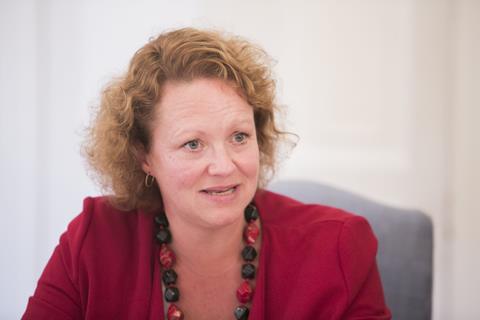
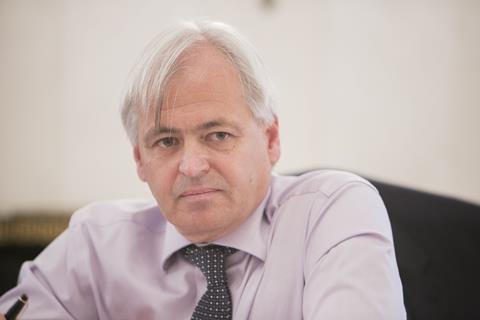


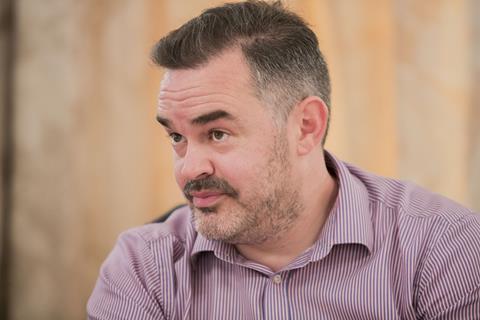


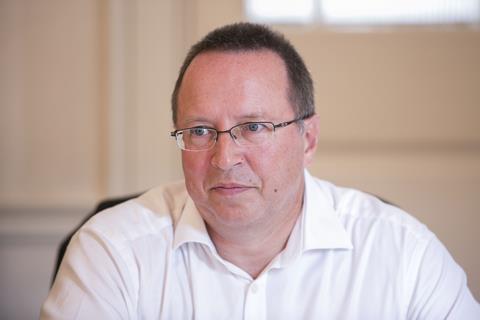
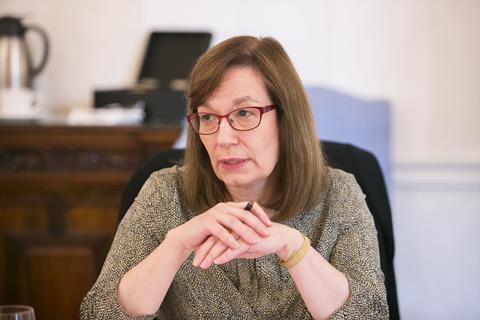
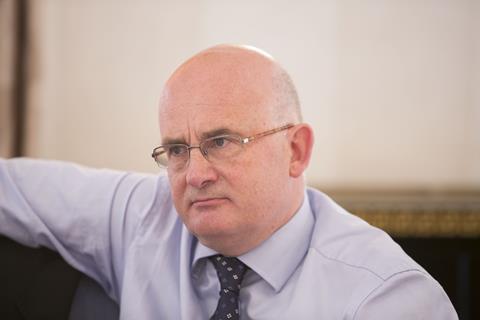








1 Readers' comment